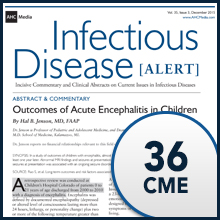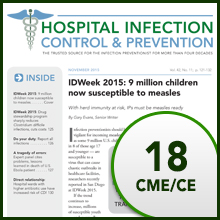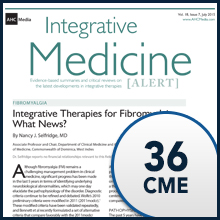Physicians Need to Provide Emergency Plan for Severely Allergic Children
February 23rd, 2017
NEW YORK – Physicians who treat children with severe allergies need to provide them more than an Epi-Pen prescription. They also need to create an emergency plan in case of anaphylaxis, states the American Academy of Pediatrics (AAP).
To that end, the AAP has created a template Allergy and Anaphylaxis Emergency Plan, developed with the support and advice of various committees, councils, and sections within the organization.
The plan includes a range of aspects of anaphylaxis emergency care, including the recognition of signs and symptoms, and treatment. A clinical report, meanwhile, focuses on providing guidance to the clinician to complete a personalized allergy and anaphylaxis plan.
“Anaphylaxis is a potentially life-threatening, severe allergic reaction. The immediate assessment of patients having an allergic reaction and prompt administration of epinephrine, if criteria for anaphylaxis are met, promote optimal outcomes,” according to the AAP statement. “National and international guidelines for the management of anaphylaxis, including those for management of allergic reactions at school, as well as several clinical reports from the American Academy of Pediatrics, recommend the provision of written emergency action plans to those at risk of anaphylaxis, in addition to the prescription of epinephrine autoinjectors. “
The report emphasizes that epinephrine is the medication of choice for the initial treatment of anaphylaxis, and early administration is associated with optimal outcomes. Use of it is warranted with definite exposure to an allergen that has previously caused a severe reaction, or if anaphylaxis develops, the AAP states. If exposure to an allergen triggers only a mild symptom, however, observation only or initiating treatment with an antihistamine may be appropriate, according to the guidance.
“In some circumstances, it may be beneficial to treat with epinephrine even if anaphylaxis is not occurring, such as when anaphylaxis is likely to develop after an exposure or when it may be difficult to determine by the observer,” suggest the report authors from Mount Sinai Health System in New York and colleagues. “Therefore, the plan provides options that can be selected at the physician’s discretion to address these possibilities.”
To ensure everyone understands and agrees with the emergency plan, space is provided in the sample form for parents’ and healthcare providers’ signatures. The second page provides space for additional instructions, such as statements of disability, and additional space is provided to include contact information for healthcare providers, parents/guardians, and other caregivers.
More space in the document is available for information such as illustrations of using the autoinjector, which the AAP suggests all clinicians review with parents and caregivers of children at risk for anaphylaxis.
“The plan is given to the patient and his or her family so they may review it and share it with the school or other child care facility or caregivers,” according to the guidance. “The healthcare provider may speak to the family regarding the benefits of permitting 2-way sharing of information between the school and the healthcare provider and completing any forms that would be required to allow this exchange of information.”
The AAP also recommends that physicians provide updated prescriptions for emergency medications.

FEATURED RESOURCE




